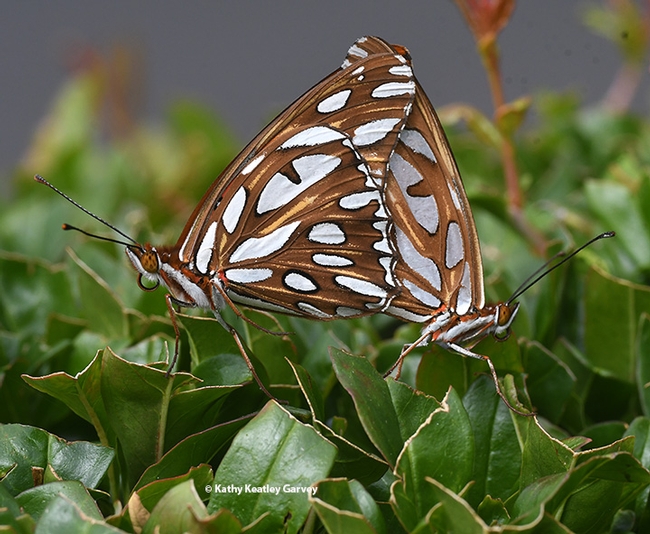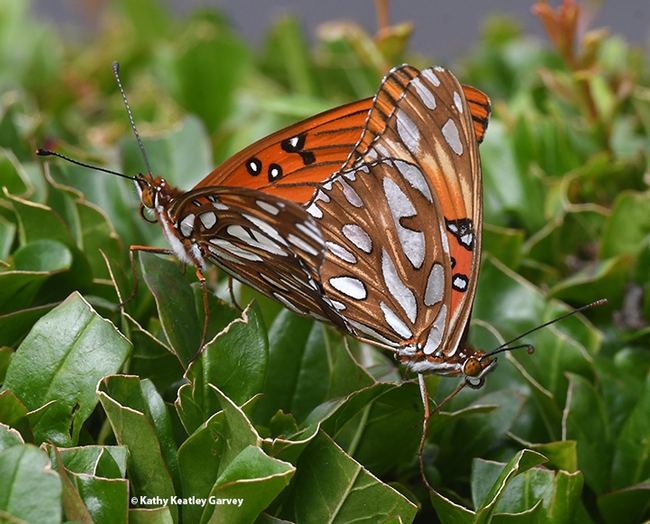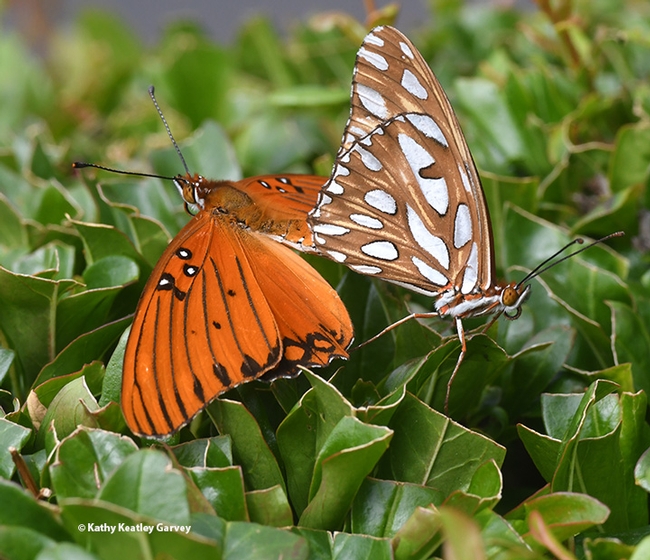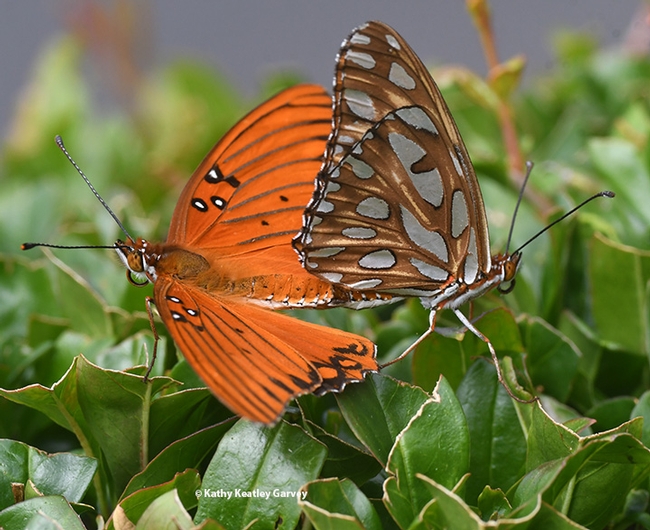Fifty shades of orange—with a touch of silver.
The bridal couple on the pomegranate tree wore orange and silver to celebrate their honeymoon.
The bride may have blushed. I don't know. Did she? Don't all brides blush?
The groom, in true form, looked quite dapper and dashing.
So there they were. The two of them. The blushing bride and the quite dapper-and-dashing groom.
They didn't invite me to their wedding. I was an uninvited guest, the only guest. So I felt obliged to crash their wedding and capture some images.
Just happened to have a camera with a zoom macro lens slung on my shoulder.
Who can resist insect wedding photography? That's about the only wedding photography happening during the COVID-19 pandemic.
This couple? Gulf Fritillaries: Agraulis vanillae. (See UC Davis distinguished professor Art Shapiro's website to learn more about them).
We usually see Gulf Frits on their host plant, the passionflower vine (Passiflora), where the females lay their eggs. and the cycle of eggs-to-caterpillars-to-chrysalids-to-adults continues.
But something startled this pair and off they fluttered from the passionflower vine to the nearby pomegranate tree.
Evolutionary success!
Ever seen the amazing macro photography of Alex Wild, curator of entomology at the University of Texas, Austin? He holds a doctorate in entomology from UC Davis, where he studied ant taxonomy and evolution with major professor Phil Ward. Wild also writes the incredible blog, Myrmecos: Little Things Matter, and teaches photography with colleagues at BugShot courses. He shoots Canon with an MPE-65mm lens.
On July 5, Alex Wild pinned this tweet:
"I'm pretty sure you didn't ask for this, but here's a gallery of insects having sex."
I'm pretty sure Alex Wild does not mince words.
Meanwhile, check out his "insect wedding photography" images!
Attached Images:

A pair of Gulf Fritillaries on a pomegranate tree. Lynn Kimsey, director of the Bohart Museum of Entomology, UC Davis, says she receives a number of calls about "two-headed butterflies." (Photo by Kathy Keatley Garvey)

The Gulf Fritillary is an orangish-reddish butterfly with silver underwings. (Photo by Kathy Keatley Garvey)

Gulf Fritillaries keeping busy on a pomegranate tree. (Photo by Kathy Keatley Garvey)

Evolutionary success! Soon the female will lay eggs and the cycle of eggs-to-caterpillars-to-chrysalids-to-adults will begin again. (Photo by Kathy Keatley Garvey)